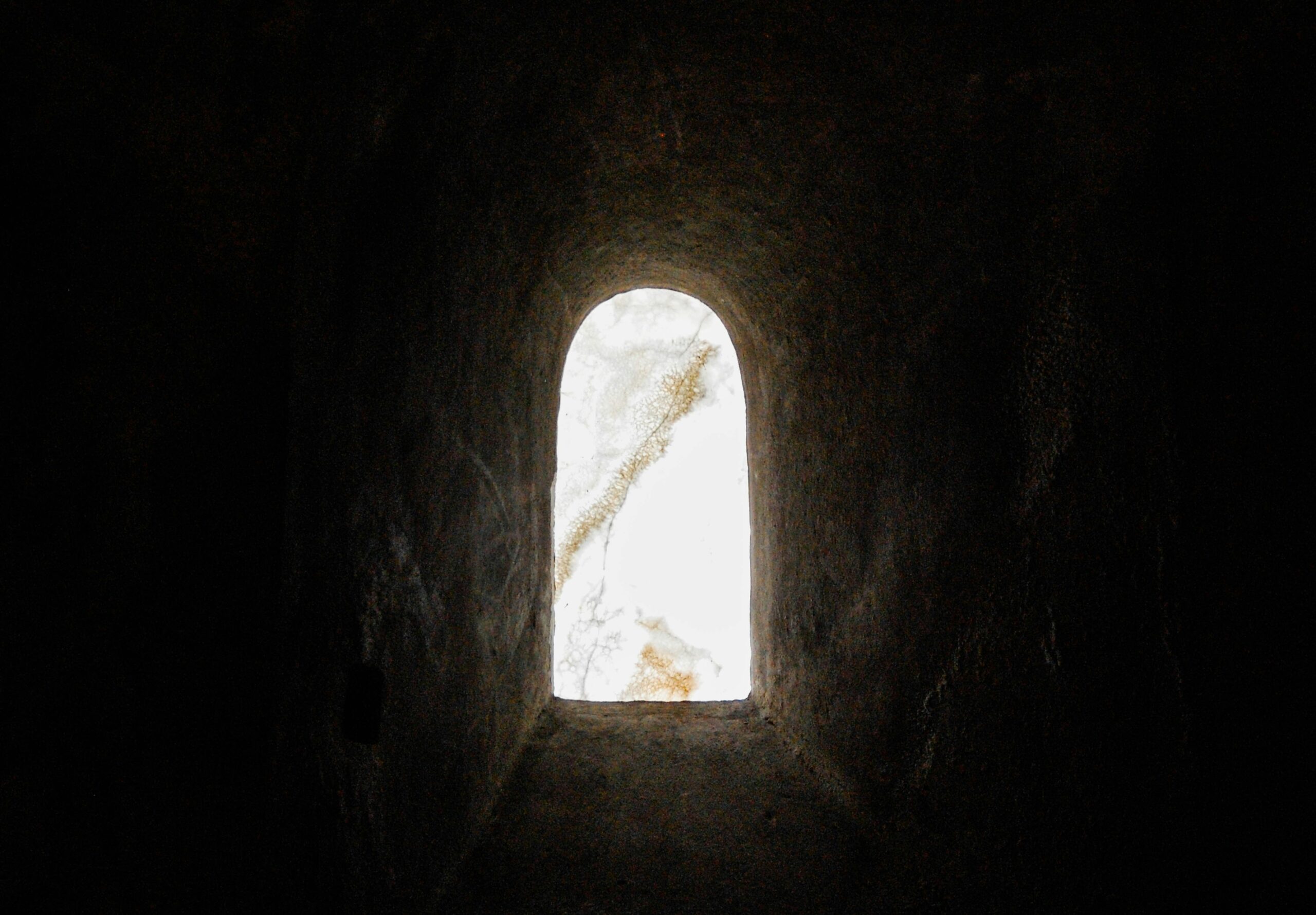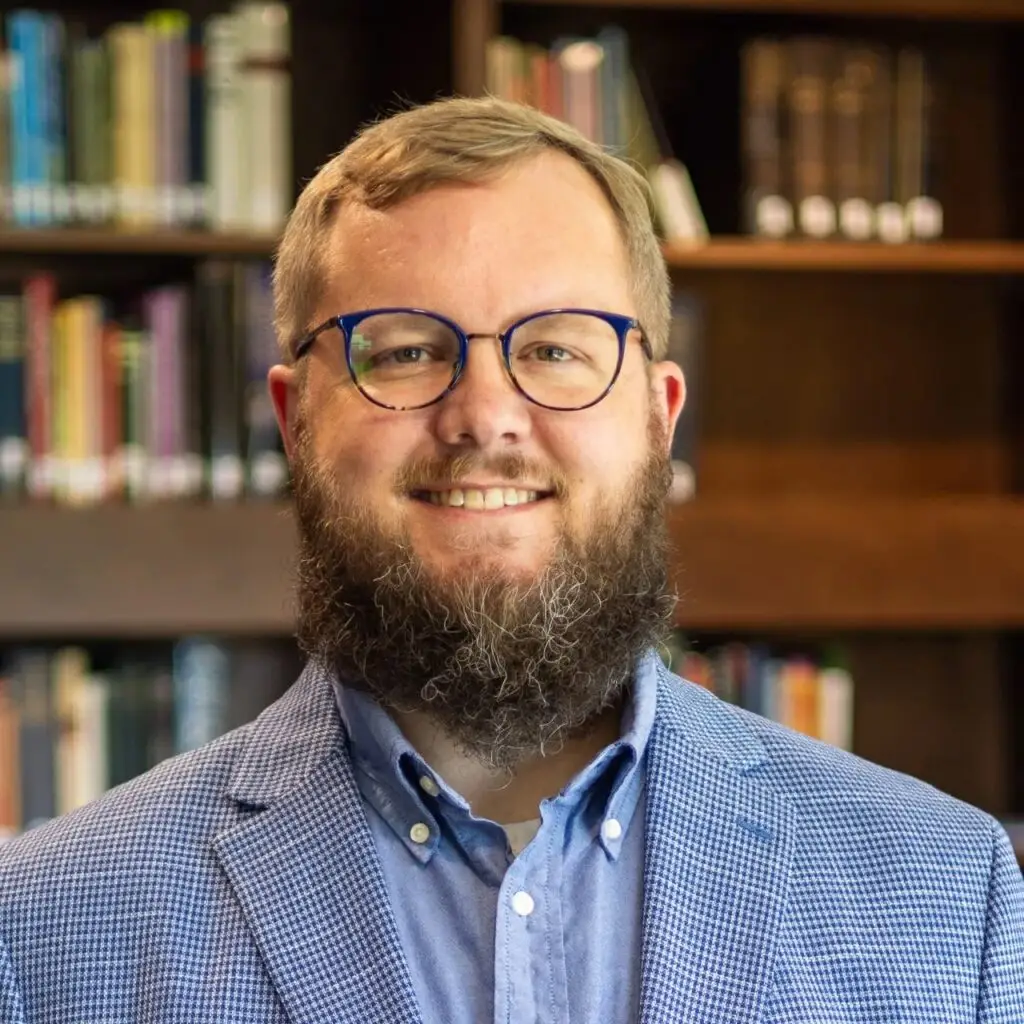*This post is the latest in a series looking at the Sabbath. Previous posts include: Sabbath Rest and Human Embodiment, Sabbath Rest and Faith, Early Puritan Sabbatarians (Part 3), Early Puritan Sabbatarians (Part 2), Early Puritan Sabbatarians, Pre-Puritan Sabbatarians? Martin Bucer’s De Regno Christi, Pre-Puritan Sabbatarians (Part 3), Pre-Puritan Sabbatarians? (Part 2), Pre-Puritan Sabbatarians? Henry Bullinger on the Sabbath (Part 1), Where is the Sabbath in the Early Church (Part 3), Where is the Sabbath in the Early Church? (Part 2), Where is the Sabbath in the Early Church? (Part 1), Ecclesiological Implications of the Sabbath (Part 2), Ecclesiological Implications of the Sabbath (part 1), Sabbath Typology and Eschatological Rest, Paul and the Sabbath, Jesus and the Sabbath, The Sabbath and the Decalogue in the OT, a look at God’s Rest as Prescriptive, an examination of the Sabbath as a Creation Ordinance.
Last post I introduced the idea that weekly sabbath rest is fitting because of our current embodied existence. In this post I will examine Paul’s understanding of our embodiment in 1 Corinthians 15. As will be seen, in light of Paul’s understanding of our current embodied nature (both pre and post fall), weekly sabbath rest should continue until our final glorification, and not be disregarded once we are justified. Because our pneumatic (πνευματικόν, v. 44) bodies will not be given until the resurrection, our finite psychical (ψυχικόν, v. 44) bodies need rest.
Paul’s discussion of the natural and spiritual body in 1 Corinthians 15:42–49 is instructive in this area.[1] Paul’s argument in this passage has many complex issues and has been discussed in depth elsewhere.[2] It will be sufficient to emphasize that Paul emphasizes Adam’s (and all humanity’s) psychical (ψυχικόν, v. 44) nature, that that psychical nature will continue until the resurrection, and that the pneumatic (πνευματικόν, v. 44) nature brought by Christ will not be assumed until the resurrection (or Christ’s return).[3] Seeing Paul’s arguments will make clear that it was appropriate for Adam, as a psychical being, to have weekly rest. Or, to put it another way, since the physical (i.e., to our physical constitution) benefits of redemption will not be given until after the resurrection, it is fitting for man to retain the same pattern of resting that he was given before the entrance of sin into the world.
Paul emphasizes that Adam was made with a psychical nature, but that that psychical nature was not the final state for which God made Adam. Adam was created from the
dust (15:47), and as such he possessed a certain “exhaustion factor,” or limit to his capacity: “Adam’s body was constitutionally made so that it needed rest from the labour God had prescribed for Adam (Gen. 2:15). A reflection of this need can be seen in Jesus’ remarks in Mark 2:27.”[4] But, this psychical state was not the ultimate goal that God had for Adam:
There lay beyond that the eschatological state of confirmed righteousness (i.e. without the possibility of sinning). This state would have been achieved by Adam had he been obedient. In Paul’s words he would have progressed from the psychical state (of his creation) to the pneumatic state, and this would have involved for Adam a new body commensurate with this new existence.[5]
Paul is contrasting the resurrection body with the fallen body in vs. 42.[6] However, in verse 44 Paul changes to a contrast between the original created body of Adam (his psychical body) and the body of the Spirit (eschatological, pneumatic body).[7] Paul explains to his readers that, “if there is a physical (psychical) body, there is also a spiritual (pneumatic) body” (vs. 44b), which is true,
Paul is saying, even before the Fall, i.e. the anticipation of the pneumatic body, precedes the necessity of redemption. Thus Adam, in his state of probation in the Garden of Eden, upon the successful completion of that probation would have proceeded to the pneumatic state. It is not for us to speculate upon the mechanics of such a transition, or more properly, progression; yet the fact that such a consummation awaited Adam cannot be denied on the basis of Paul’s language in this text.[8]
However, given the entrance of sin into the world, Adam lost the ability not to sin, and “consequently, all hope of gaining the pneumatic apart from redemption. It is at this point that the eschatological became necessarily soteriological.”[9]
Because Adam had an inherent “exhaustion factor” even before the fall, and because the psychical body remains, even for believers, until the resurrection, it is entirely fitting that man be given a day each week for the gift of rest. Asher explains the logic of Paul’s argument:
What Paul is saying is: if his readers accept the fact that the first man was of the earth and dusty and what naturally follows that all humans are from the earth and dusty, then they must also accept the fact that a second Adam who is from heaven exists and humans also acquire his characteristics…Nevertheless, since the progeny of the second Adam has not yet acquired this heavenly body, then it must lie in the future as a result of an eschatological resurrection. This final point is made in v. 49. In this verse, Paul makes it clear that these two antithetical forms of existence, a soma pneumatikon and a soma psychikon, are not coexistent, but successive.[10]
Davies agrees,
It was also entirely appropriate to Adam’s psychical body to have a weekly rest, knowing that the day would come when he would be given a new body in which to enjoy God’s eternal sabbath rest. For then he would run and not be weary, walk and not faint (Isaiah 40:31). The eschatological state would not be devoid of activity, rather the activity of the pneumatic body would be non-exhausting activity. The contrast for the wicked in that state would be “no rest” (Rev. 14:11).[11]
While believers are currently indwelled by the Holy Spirit, that does not negate the physicality of their bodies. Rather, because the fullness of the pneumatic gift (i.e., the glorification of their bodies into pneumatic constitutions) will not be tasted until after the resurrection,[12] the ongoing affirmation of man’s physical constitution and the weekly need of rest is proper in light of humanity’s current state of embodiment.[13] Davies sums up the argument, “Since the eternal rest of God still awaits believers and since they are still partakers of the psychical nature, the conditions under which the sabbath was first ordained [i.e., creation week] still apply.”[14] Thus, the continuity of man’s physical embodiment both before and after the fall until the resurrection is another argument for weekly sabbath rest not being abolished in Christ but being retained as a creation ordinance.
Those positions that argue that weekly sabbath rest is abrogated have no biblical basis for enjoining upon people the command/gift of rest. That is, the strongest argument that that position can make is that it is wise for believers to rest, possibly even to say that it is wise to rest weekly. Continuing the discussion of inaugurated eschatology, those positions would be guilty of an over-realized eschatology in the realm of anthropology. Or, at least, their position seems to not properly account for the physically situatedness of our current existence.[15] Those positions, combined with a strong sense of work as a creation ordinance, could easily lead to a neglect of the physical needs of the body and/or a guilty conscience when one does decide to (or is forced to) rest. Both pitfalls can be avoided. God has given a pattern for normal weekly resting from the foundation of the world.
I am still exploring the connection between human embodiment, anthropology in general, and sabbath rest. I’d love to hear your thoughts in the comments section!
[1] Much of this discussion on Paul’s use of natural and spiritual bodies leans upon Davies, “The Christian Sabbath,” 35.
[2] This brief discussion of Paul’s argument will merely defend the physical state of man (both before and after the fall) and that his physical state does not change until his resurrection (or Christ’s return).It is beyond the scope of this paper to fully exegete this passage. Jeffrey Asher has called this passage, “One f the most controversial passages in the New Testament,” in Polarity and Change in 1 Corinthians 15: A Study of Metaphysics, Rhetoric, and Resurrection, Hermeneutische Untersuchungen zur Theologie 42 (Tübingen: Mohr Siebeck, 2000), 110; For a history of interpretation on this passage, see: François. Altermath, Du corps psychique au corps spirituel: interprétation de 1 Cor. 15, 35-49 par les auteurs chrétiens des quatre premiers siècles (Tübingen: Mohr, 1977), 52–231; cf. Hans Clemens Caesarius Cavallin, “Life after Death: Paul’s Argument for the Resurrection of the Dead in I Cor. 15” (Th.D. Thesis, Lund: Gleerup, 1974).
[3] In his “Paul’s Eschatological Concept of the Spirit,” Vos demonstrates the same concepts as Davies. Indeed, Davies seems to be leaning on Vos heavily. Vos comments about the pneumatic and psychical that it would be a mistake to supply σῶμα. Rather, “they designate the successive reign of two comprehensive principles in history, two successive world-orders, a first and a second creation, beginning each with an Adam of its own,” in Geerhardus Vos, Redemptive History and Biblical Interpretation: The Shorter Writings of Geerhardus Vos (Phillipsburg, NJ: P & R Pub, 2001), 106. Later, when discussing why Paul would switch from comparing the body of sin with the body of the resurrection (up to v. 44a) to comparing the creation body and the resurrection body, Vos contends: “The Apostle was intent upon showing that in the plan of God from the outset provision was made for a higher kind of body than that of our present existence…The world of creation and the world of eschatology are thus correlated, the one points forward to the other; on the principle of typology the first Adam prefigures the second Adam, the psychical body, the pneumatic body” (Ibid., 106 n. 26).
[4] Davies, “The Christian Sabbath,” 35.
[5] Ibid.
[6] For a good examination of the pneumatic body vs. the psychical body language: Anthony C. Thiselton, The First Epistle to the Corinthians: A Commentary on the Greek Text (Grand Rapids, MI: W.B. Eerdmans, 2000), 1276–81.
[7]For a discussion of and defense of this rhetorical shift in Paul’s argument in vs. 44, see: Duane Watson, “Paul’s Rhetorical Strategy in 1 Corinthians 15,” in Rhetoric and the New Testament: Essays from the 1992 Heidelberg Conference, ed. Stanley E. Porter and Thomas H. Olbricht, Journal for the study of the New Testament Supplement Series 90 (Sheffield: JSOT Press, 1993), 246; Asher, Polarity and Change in 1 Corinthians 15, 113 n. 50.
[8] Davies, “The Christian Sabbath,” 35.
[9] Ibid. Emphasis original. This idea is reminiscent of Vos: “The eschatological is an older strand in revelation that the soteric. The so-called ‘Covenant of Works’ was nothing but an embodiment of the Sabbatical principle,” Biblical Theology, 140.
[10] Asher, Polarity and Change in 1 Corinthians 15, 115–6. Emphasis original. He continues explaining the future nature of the pneumatic state: “Here [vs. 49] he is alluding to an eschatological resurrection, a point that he does not make explicit until vv. 50–57 in the following section of his argument. In v. 49, he simply says that the antithesis of heavenly and earthly, as a result of the influence of the prototypes, is acquired by human being successively. In v. 49a, he shows that>> we bore the image (alluding to the soma psychickon) of the man of dust (the terrestrial human form, acquired from the first Adam). The past tense of this verb (we bore) shows that the influence of the first prototype began in the past as the first human, terrestrial being. However, this clause is followed by a future verb indicating that sometime in the future we, that is , terrestrial beings, will bear the image (an allusion to the soma pneuatikon) of the second Adam, the prototype who is from heaven” (Ibid., 116).
[11] Davies, “The Christian Sabbath,” 35. Emphasis original.
[12] Regarding the temporal succession of the two natures, see: Gordon D. Fee, The First Epistle to the Corinthians (Grand Rapids, MI: W.B. Eerdmans, 1987), 786–90; David E. Garland, 1 Corinthians (Grand Rapids, MI: Baker Academic, 2003), 734–7; Thiselton, The First Epistle to the Corinthians, 1275–90. Regarding the succession of the two natures, Thiselton comments, “Eschatological discontinuity implies that the Corinthians cannot yet live as if the triumph is complete: first, the natural, everyday order of life with all its constraints and contingencies, i.e., the purely human, continues; only after that does “Christlikeness,” i.e., bearing the imprint of the last Adam, become wholly transposed into following Christ in the realm of the Spirit without constraint or qualification,” (The First Epistle to the Corinthians, 1285, emphasis and bold original). The implication that the Corinthians cannot live as if the triumph is complete is important, as will be discussed below.
[13] Ciampa and Rosner comment, “Paul’s language [natural vs. spiritual body] reflects what is called inaugurated eschatology, including the idea that Christians have already begun to experience the blessing sand realities of the last days, including the Spirit, such that they may be called ‘spiritual.’ Here, however, for the sake of the point he wants to make about the radical contrast between the two types of bodies, he describes a strict dichotomy between the life animated by the soul, or ordinary human life, and life fully animated by God’s Spirit, which are two mutually exclusive experiences. To live in a resurrected body is to experience a new mode of existence, life directed and empowered by the Spirit, suitable to the age to come, in a body untainted by sin and death in any sense,” Roy E Ciampa and Brian S Rosner, The First Letter to the Corinthians, Pillar New Testament Commentary (Grand Rapids, MI: William B. Eerdmans, 2010), 817. Emphasis added.
[14] Davies, “The Christian Sabbath,” 37 Emphasis original.
[15] Again, Thiselton is helpful: “Paul calls for eschatological realism. Humankind remains human and fragile prior to the resurrection of the last day. Already the new order has begun a transformation at the level of Christlikeness or being ‘from the Holy Spirit’ in a limited sense that still eaves fallibility and constraint. Those at Corinth must not think and act as if they were already ‘there,” in The First Epistle to the Corinthians, 1288.



